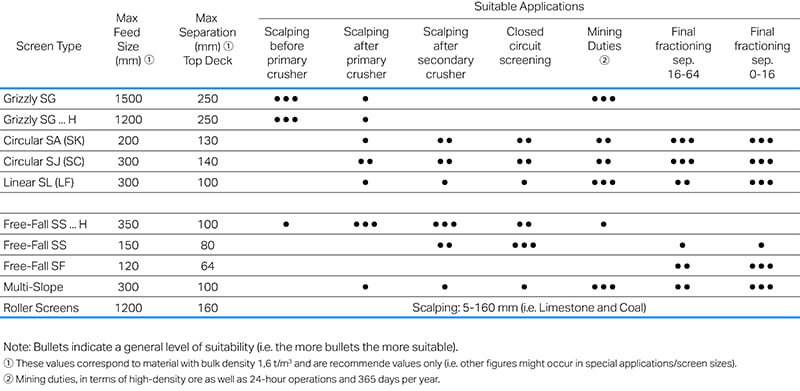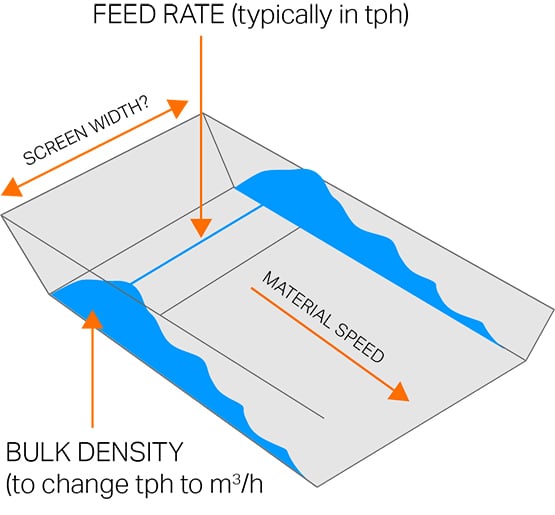Selection of screen type
Selecting a screen is not something that happens in isolation. To be sure of making the right choice, you need to make a comprehensive analysis, one that examines your screen or screens within the context of your entire operation. Only when you analyze screening alongside your other machinery and in terms of the overall aims of your operation will you be able to optimize effectiveness.
In addition, with the huge amount of variables involved, it’s unlikely that the ideal solution exists. It’s inevitable that compromises will have to made, and that you will need to balance factors like set-up costs, running costs, efficiency, and accuracy.
That said, it is possible to set out some general principles for selecting a screen type. Three factors that will always need to be considered are the maximum feed size, the general application, and the desired separation. Or, to put it in the simplest terms, what you start with, what you’re planning to do to it, and what you hope to have at the end!
This table brings together these three factors and shows which combinations are suitable for Sandvik’s range of stationary screens (more stars indicates greater suitability).

